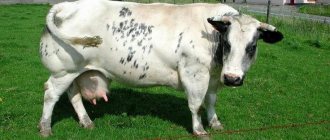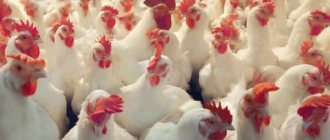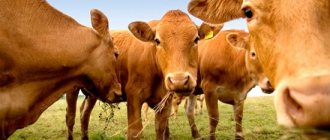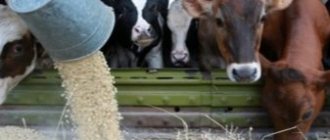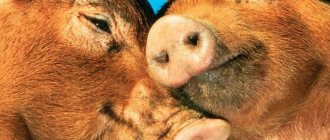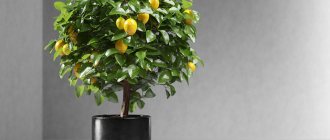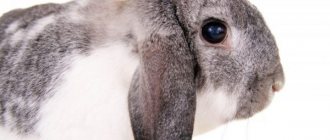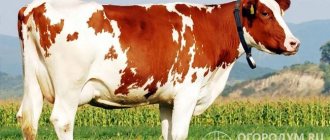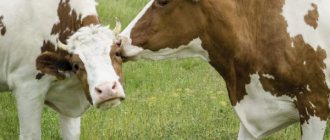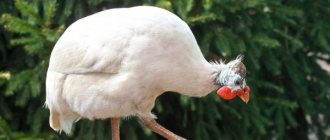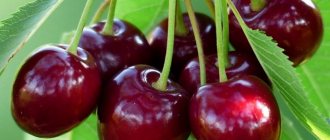Mating of cows is an important process in the procreation of cattle. Knowledgeable farmers are quite scrupulous about the mating of females and bulls, since the quality of future offspring depends on the health and external characteristics. And, indeed, this process requires careful attention and a special approach.
Cow mating process
Reproduction is a natural instinct
Cattle breeding is impossible without mating animals. Obtaining high-quality offspring becomes possible only if all stages of the technological process are followed, as well as the correct selection of the age of the male and female. In addition, special attention is paid to the reproductive cycle of cows, which is divided into 4 stages:
- In heat . During this period, significant changes occur in the animal’s reproductive system, which is manifested by abundant secretion of mucus from the genitals.
- Sexual arousal . Characterized by loss of appetite, constant mooing and decreased milk yield. At the same time, there is an increase in activity.
- Hunting . The duration of the period varies from 12 to 36 hours, and its frequency can be repeated after every 20 days.
- Ovulation . Occurs 5-15 hours after mating with a bull.
Cow with calf
Readiness of a bull and cow for mating
Sexual maturity in females occurs at 8-10 months, and in bulls at 6-8 months. At the same time, at this age, the cow should be protected from mating, since subsequent pregnancy can have a detrimental effect on the animal’s still weak body. Bulls should also not be mated at such a young age, which risks losing their ability to produce offspring. However, it is also not recommended to delay it.
The optimal age for mating is 2 years for cows and 18 months for bulls. Additionally, it is important to consider the size of the animals. A good weight for a heifer is 300 kg.
Mating cows in nature
In conditions of constant presence of females and males together, mating occurs under the influence of the reproductive instinct. The bull independently determines the cow's readiness for mating. However, often in nature, female cattle are injured by large and heavy males, which should be taken into account by farmers who select pairs for procreation.
Reproduction - selection method
Owners of cattle must remember that before carrying out the mating process, they need to conduct a thorough inspection of the animals. If any oddities in behavior are found that indicate injury and pain in the animal, then mating cannot be carried out. In addition, exhaustion or excess weight in a pet is a factor that serves to cancel mating. Remember that to reproduce, a cow needs to be at least 70% of her normal adult weight.
From the video “All about cattle breeding” you can learn a lot of interesting things about this process.
Matching
The selection of a mate for an animal directly depends on how the mating is carried out. When it is carried out manually, a pair is formed artificially, based on the criteria that a person needs. Thus, the weight of the bull and heifer, breed, meat and dairy qualities, fertility and other important qualities are most often taken into account. Manual mating allows each cow to be matched with an equal partner who will not be able to injure the young, fragile skeletal system and muscles of the animal.
Carrying out this procedure freely ensures almost 100% success in fertilizing the female, but does not allow you to select a pair as carefully, which can have a bad effect not only on the health of the female, but also on the important characteristics of the offspring.
Technology and mating methods
As mentioned earlier, at home, mating takes place in two ways: manual and natural. Let's talk about them in more detail. The entire mating process is carried out very quickly, especially if the male has good reproductive abilities.
Manual mating is based on determining the most favorable hunting period. To do this, it is most convenient to keep a log of estrus, which will indicate all the cyclic changes in the cow. Insemination should be carried out immediately after the start of the hunt. It is best to carry out insemination 10-15 hours after the start of the hunt. To determine the optimal time for mating, it is necessary to have sufficient experience; enterprises most often use test bulls for these purposes.
Remember that it is very important to correctly select the bull that will work with the cow. With manual mating, the probability of fertilization of a cow is 60-70%, which means that it is better to carry out not one, but two inseminations.
Natural mating occurs when the animals roam freely. The male usually determines the best time for mating. As a rule, males and females are left together over a large area for about 60-90 days. But it is important to ensure that large, heavy males do not end up on the same paddock with young heifers, otherwise this will lead to serious injuries to the animal.
Signs of heat in females
A cow's readiness for mating can be determined by a number of characteristic signs and the condition of the genital organs, which manifest themselves during the process of sexual heat. A standard cycle lasts 21 days, a shortened cycle lasts half a month, and an extended cycle lasts 24 days. There are 3 stages:
1. Excitement
Signs of heat in a cow also manifest themselves in changes in its behavior:
- the level of anxiety and physical activity increases;
- loss of appetite;
- attacks of freezing when a male approaches.
Signs of heat
2. Braking and stabilization
During one of these stages, the follicular membrane ruptures, after which the egg is released. The duration of the period is on average 20 hours. The process is accompanied by the acquisition of a more saturated shade by the genitals.
Timing nuances
Sexual heat in cows does not always end with mating with a bull. During the first heat, heifers and recently calved females are not subject to mating. A cow is considered ready for mating at the age of 2-3 years, whose weight is 70% of the total weight of an adult. Until this age, active formation of the animal’s body occurs. The ideal mating time is considered to be the period from May to June inclusive, which will allow the female to stock up on a sufficient amount of vitamins and beneficial microelements before the onset of winter. In this case, calves should be expected in March of next year.
Duration of the hunt
Sexual heat in cows is a state in which they are ready to mate with a bull. On average, this period lasts about 18 hours, which is determined by the breed and age characteristics of the individual. Sometimes the duration of the hunt is influenced by the time of year. For example, in winter it lasts longer than in summer.
Duration of heat in cows
Farmers with extensive experience advise insemination in the middle of the cow's estrus period. It is this period that ideally coincides with the most active point of hunting, when there is a sharp increase in estrogen levels and a decrease in progesterone. After 10-18 hours, ovulation occurs.
Basic recommendations
When planning vaccination, you need to consider several factors:
- The vaccine administration schedule is clearly age-related. Thus, vaccination against pasteurellosis can be administered no earlier than 55 days from birth. Anthrax vaccination is allowed only at 100 days.
- Most drugs require revaccination. This allows you to consolidate the achieved result. Moreover, the frequency of vaccine administration can be changed if the epizootic situation in the area has worsened.
- Some formulations require administration prior to calving to provide immunity to newborn calves.
Vaccination does not exclude regular health checks of all animals in the herd. In the event of infection, it is necessary to immediately separate the victims from the rest of the group to prevent the loss of the entire livestock.
Choice of inseminator
The bull is ready for mating when he reaches 8 months. High-quality offspring are possible only from a healthy male, who must have:
- good pedigree, when the father’s female offspring is highly productive and attractive in appearance:
- strong physique and a tendency to gain weight;
- purebred;
- quality seed;
- a large number of successful cases and conceptions;
- healthy offspring.
Insemination bull
An inseminator with about 50% successful attempts at fertilization is considered to be of high quality. During the year, bulls are able to cover up to 80 females. Before mating, a special diet enriched with proteins and vitamins is developed for males. It is important that the bull maintains physical activity for 2 months, alternating with periods of proper rest.
Mating process
In households, they inseminate cattle using natural and artificial mating. In natural breeding, the bull and the cows assigned to it are left on the pasture, where the male himself determines the time when and with whom to mate. This method has disadvantages - not all females can become pregnant, it is difficult to determine the exact date of mating, and therefore the birth. During manual mating, the bull covers the cow when he is brought to her. The effectiveness of this method is higher; it is possible to record matings and calculate the calving date.
To cover a cow, it is not necessary to keep a bull on the farm. Artificial mating has been used on farms and in private households for a long time. In this case, the bull does not inseminate the cow directly; she is injected with his sperm. The advantages of this method: you can get offspring from purebred animals that will have improved characteristics, you can get more calves from one dose of sperm from one bull than usual, it is easier to control the insemination process, the effectiveness of the method is higher than with natural mating.
Types of insemination
Mating of cows with bulls can be done in several ways. In small farms, free and manual insemination is most often used. On industrial-scale farms, artificial insemination is important. Let's look at each of the methods in more detail.
Free mating
This method is often used on small farms. It involves the constant presence of the female next to the inseminating bull throughout the day, after which the male is taken to a separate stall to rest.
The advantages of free mating include:
- maintaining the stability of the cow's cycle;
- minimizing the likelihood of missing heat.
The main disadvantages are the inability to carry out breeding work and calving planning. In addition, there is a high probability of genital infectious diseases and injury to young females.
Free mating
Manual mating
This method is more reliable and is equally often used in small and large farms. The mating process takes place in a separate room, which contains a bull and several females assigned to him. A special pen is placed in the room, on which the male places his limbs to avoid injury to the heifer during the fertilization process.
During the hunt, the female is brought to the bull twice: at the beginning and in the middle of the reproductive cycle. Immediately before mating, animals are thoroughly examined and washed.
Artificial insemination
The artificial insemination method is distinguished by the ability of a male to cover up to 500 females at a time. To obtain sperm, the cage is carried out artificially, the essence of which is as follows:
- in a separate room, a fake version of a cow’s vagina is made;
- before taking biological material, the bull is walked in a circle, and special sounds are created for it, imitating the roar of a cow during a hunt;
- after that, the male is introduced into the arena, where material is collected using a mechanical apparatus.
Collecting material from the inseminating bull using a mechanical apparatus
Cooking method
This insemination method allows:
- during the mating process, use valuable and high-quality males;
- detect heat and infertility in time;
- stimulate sexual function.
In this case, cows in heat are placed in a spacious enclosure called a wark, where the bull is subsequently brought. The male independently chooses the female for mating. Bulls are allowed to visit heifers twice during the day: in the morning and in the evening, lasting several hours.
Mating (mating) of cows and bulls: photos and videos
» Livestock » Cows and bulls » The process of mating cows and bulls
1513
articles
Every cattle breeder is faced with the task of creating adequate living conditions and ensuring balanced nutrition. Mating cows is one of the components of successful livestock breeding. It is necessary to correctly calculate the time of mating, taking into account the health and age of the animals.
Mating cows and bulls
- 1 Age at first mating
- 2 Free mating and manual mating
- 3 Notes
- 4 Literature
Mating
- mating of animals to produce offspring. The term is usually applied to farm and companion animals (sometimes also to wild animals kept in captivity). The mating of dogs is usually called "mating".
Mating is one of the ways a female is inseminated by a male (in agricultural terms, the uterus by the producer). Unlike artificial insemination, mating is a method of natural insemination. In livestock breeding, mating is an outdated method and is gradually being replaced by artificial insemination as more progressive and having a number of significant advantages.
Mantises
Even children know about the piquant peculiarities of mating mantises. However, females do not always devour males and, according to Chatt, well-fed females in one out of three cases simply release their partner to freedom.
This rule applies to all species of these insects, both in the wild and in captivity.
Males of Asian mantises have completely adapted to behave in such a way as to survive after mating, and therefore cannibalism is practically absent as a phenomenon in their environment.
It is interesting that some praying mantises continue to perform frictions even after death.
Moreover, decapitation can cause an involuntary, strong spasmodic contraction of the abdominal cavity, which increases the likelihood of successful fertilization.
According to this observation, cannibalism is often a measure to preserve the species population, no matter how strange and unnatural it may seem.
Age at first mating
To ensure high fertility of the animal, the birth of a healthy offspring, no damage from pregnancy to the mother’s body, and its normal functioning during pregnancy, childbirth and lactation, it is important to observe the age of first mating. Since the sexual maturity of an animal usually occurs earlier than its main growth, structural and physiological development ends, sexually mature females are not allowed to mate with males during the first 2-3 sexual cycles (as well as artificial insemination is not performed)
Since the sexual maturity of an animal usually occurs earlier than its main growth, structural and physiological development ends, sexually mature females are not allowed to mate with males during the first 2-3 sexual cycles (as well as artificial insemination is not performed).
It is generally accepted that an animal has reached the reproductive period when its body weight is at least 70% of the estimated body weight of a mature organism, and its body size is approximately equal to that of adult animals.
Hand mating of Finnish breed horses. A man stands to the side and slightly behind, controlling the stud stallion with long reins
In domestic pigs, young sows are allowed to mate no earlier than 8-9 months of age, when they weigh 130-150 kg, boars - no younger than one year of age, when they weigh 180-200 kg. In white downy rabbits, the first mating of females is recommended no earlier than eight months of age.
Methods for determining heat in cows
Whether a female is in heat can be determined by her behavioral signs, however, this diagnostic method is not accurate, since most cattle have rather vague symptoms. The most common manifestations include:
- loss of appetite;
- anxiety, expressed in constant mooing;
- pink secretion of a pale hue and viscous consistency, released from the genitals.
There are other methods for identifying a female’s readiness for fertilization.
Body temperature measurement
The preovulation period is necessarily accompanied by a change in the female’s hormonal levels, which is manifested by a change in body temperature. In order to identify pathological abnormalities and the time of onset of heat, temperature measurements should be taken every day. Immediately before ovulation, the values will increase by an average of 0.3 degrees.
Probe Bulls
On farms, bulls with a keen sense of smell are necessarily bred. The process of estrus in cows is accompanied by the release of mucus, which has a specific odor. The so-called probe bulls catch it and begin to show interest in the female. If such a bull is accepted, the heifer is selected for insemination. The presented method is one of the most reliable for determining heat in cows.
Test bulls are animals that are sexually active but not capable of fertilizing.
Instrumental method
It involves taking a sample of mucus secreted from the female using a special instrument. When estrogen reaches its maximum levels, the mucous secretion acquires a special structure, which can be identified through microscopic examination. After the end of the hunt and the onset of ovulation, the mucus is transformed, characterized by crystalline disintegration.
Pedometry
As mentioned above, the period of heat in a cow is always accompanied by physical activity, which is what the pedometry method is based on. For diagnostic purposes, a special device is attached to the animal’s limb to record the level of activity. Monitoring is carried out daily, and the collected data accurately determines the highest peak of female activity, which always coincides with the beginning of heat.
Heat detector
It is a device capable of diagnosing the approach of estrus and the moment of ovulation. Externally it looks like a large thermometer, the tip of which is inserted into the internal organs of the cow and kept there for one minute. The disadvantage of this method is the high cost of the device.
Heat detector
Possible problems
Intensive use of cows often has a negative effect on their reproductive function. Some have to be inseminated during not one, but several heats. Cows that cannot conceive after 3 subsequent matings are considered problem cows. Moreover, their sexual cycle proceeds normally, heat occurs at the right time, but the animal is not fertilized.
The reasons for this condition of females may lie in hormonal abnormalities (problem individuals have a higher level of progesterone than usual), in a change in the uterine environment, which rejects the embryo. The cause may be embryonic mortality.
Poor living conditions, insufficient nutrition or, conversely, excessive feeding when animals become fat - all this also leads to disturbances in the reproductive sphere of cattle.
Mating of cows should be carried out at a certain time, when the animal’s body is maximally prepared for fertilization. To determine the date of mating, you need to monitor the manifestations of the reproductive cycle of cows and conduct mating during the hunting period. At home, natural and artificial insemination methods can be used to successfully breed cows. Which one to choose depends on whether there is a bull on the farm and on the number of livestock.
Pregnancy check
Pregnancy refers to the pregnancy of cows. There are a number of ways to diagnose it. However, the most win-win is a visual inspection. First, pay attention to the female’s genitals; during pregnancy, the mucus has a transparent color and a viscous structure. At the same time, if impurities of pus or blood are found in the mucus, we should talk about the development of pathology.
Other signs of a pregnant cow include:
- swollen mammary glands;
- swollen peritoneum;
- acquiring skin elasticity and smoothness.
Sexual cycle of cows
The sexual cycle in cows is the period of time from the beginning of one heat to the next. Its average duration is 18-24 days. It consists of two phases:
- Luteinova
- Follicular.
Let us first consider what the follicular phase of the reproductive cycle is. On the day when the follicle fully matures, the concentration of the hormone estradiol in the female’s body reaches its maximum value. During this period, she shows signs of hunting. The cow assumes a stationary position and waits for insemination and then mounts other individuals in the herd. The next stage of the sexual cycle is ovulation. The egg is released from the follicle. This usually occurs 10-12 hours after the end of the hunt. At this point, the follicular phase of the cycle, which is about 3-4 days long, ends and the luteal phase begins.
If fertilization does not occur, then the very next day or a little later, bloody discharge from the vulva appears. After a short estrus, the formation of the corpus luteum begins; this process takes about 5 days. It is involved in the synthesis of progesterone. If fertilization does not occur, the corpus luteum gradually dissolves. Along with this, follicle growth occurs in several stages.
As a result, several follicles mature in the ovaries, one of which is called dominant, since it is larger than the others. It is he who will release the egg during ovulation for fertilization. In the absence of fertilization, the corpus luteum dissolves, and the luteal phase of the cycle ends.
Cow synchronization circuit
Currently, the “Ovsing” scheme is especially popular for cattle breeding, the essence of which is the introduction into the muscle structures of the heifer of two active drugs in the form of gonadotropins and hormones that stimulate follicles. The presented diagram looks like this:
- when the first signs of hunting appear, Surfagon is injected into the muscle structures in an amount of 10 ml;
- with the onset of the seventh day, use the drug Estrofantin in an amount of 2 ml;
- ninth day - Surfagon again in a halved dosage;
- Artificial insemination is carried out, lasting about 10-16 hours.
"Surfagon" and "Estrophantine" - drugs used to synchronize heat in cows
Video “Keeping cows in a homestead”
The video talks about the peculiarities of keeping cows in a private household.
Featured Articles
Your cow has calved successfully. Then everything is not so simple - you need to milk the cow correctly, because both the amount of milk and the health of the animal depend on this.
If the first livestock has already grown, the farmer faces a new difficulty: calving a cow, receiving a calf. How to do this in the best way - find out in the article
How does birth occur in rabbits, features of caring for mother and rabbits. What does the correct development of babies and the health of the female depend on? Read here
- 12 765
- Irina Nikolayevna
Copying material is permitted only with an active link to our website
Materials: https://hrunya.ru/korovy/razvedenie/sluchka-2743.html
+ —
Tips and tricks from experienced livestock breeders and veterinarians
Farmers who do not yet have sufficient experience in breeding cattle should abandon the method of artificial insemination. For this purpose, it is better to use the services of a veterinarian, and also take into account some useful recommendations:
- In the case of artificial insemination, the sperm can enter the egg only by introducing biological material into the anterior part of the vagina, reaching the uterine cervix as much as possible.
- Before insemination, a preliminary examination of the female’s genitals is important, since in individuals who have given birth, a fold may form that prevents the passage of sperm.
- After the calf is born, the cow should not be allowed out to pasture for several days.
Timely and correctly carried out mating of cows subsequently makes it possible to achieve high productivity of the breed. It is important to pay close attention to animals in order to detect changes in their behavior in time. It is recommended to choose an inseminating male with a high degree of responsibility. Only then can high-quality and highly productive offspring be achieved.
Pair selection and preparation
When choosing a bull, you need to take into account its productivity, breed characteristics, and fertility.
Of course, this applies more to those cases when the farm does not have its own producer and needs to rent one. Most often, a male and a female of the same breed are chosen. For breeding purposes or to obtain productive offspring without further breeding, crossbreeding can be used
It is important to find out in advance about the compatibility of breeds
Before mating, you need to carefully examine the animals. They must be completely healthy. Weight must be at least 70% normal. In case of exhaustion or obesity, mating is not carried out.
Estrofan: instructions for use in veterinary medicine for cows
The drug is actively used in veterinary medicine. Its use is necessary to synchronize heat in cows. It is also used to treat the ovaries and restore the disrupted anovulatory cycle. Veterinary Estrofan is used for restoration, contraction of the uterus, and termination of pregnancy in the first half.
Estrofan
Dosage
Estrofan for cows is administered intramuscularly. To stimulate estrus, the drug is prescribed 2 ml 2 times a day. Estrofan should be re-injected after 10 days.
Mode of application
The use of the drug must comply with the dosages indicated in the instructions:
- The first dose is administered to the animal in any phase of the cycle.
- 10 days after the injection, the first dosage is doubled.
- On the 14th day, artificial insemination takes place.
- Repeated artificial insemination is done on the 15th day.
Should the bull cover the heifer for the first time?
This is a common misconception. The hymen does not interfere with the artificial insemination of a heifer. For this purpose, the rectocervical insemination method is used all over the world.
There are two advantages to covering with a bull:
- The male will accurately determine the best covering time, hence the slightly higher percentage of successful attempts compared to the AI.
- A familiar and understandable method for many.
But the risks of this method of coverage are much higher than the risks of AI. Compare for yourself:
- Infection with sexually transmitted infections, which often leads to infertility and miscarriages;
- The heifer may have a large fetus, which again will provoke a difficult birth;
- You don’t know what kind of offspring the bull will have - what milk production will be from such a heifer, how the calf will gain weight.
From practice(!): I have been keeping cows of high-yielding breeds for many years and I inseminate them myself and carry out AI to order. According to my observations, the most valuable and successful for obtaining heifers for breeding are from cows up to about the eighth calving. The first calving should not be neglected. Later, calves are more likely to have health problems. Although there are no prohibitions. They mainly look at the potential and health of the calf itself.
Mating methods
There are several ways to raise cattle:
- free reproduction;
- manual method;
- artificial insemination.
Each of them has a number of advantages and is used in modern animal husbandry.
Pairing
- Free reproduction is common in small farms with small livestock. The mating of cows with the inseminating bull occurs during joint grazing. The animals spend the whole day together in the pasture; at night the bull is taken to a separate stall. The male independently selects a cow in heat and inseminates her naturally.
The method has undoubted advantages. The reproductive cycle is not disrupted, every cow is covered in heat, and the fertilization rate is quite high.
The main disadvantage of the method is the inability to select animals, plan pregnancy and control calving dates. In addition, despite the fact that only animals that have passed an inspection, including passing a whole list of tests, are allowed to participate in the process, with natural reproduction the percentage of animals infected with STDs and other diseases increases. Also, free mating harms the male, he gets tired faster, and productivity noticeably decreases over time.
- The manual method is that animals of different sexes are kept separately, and the male is allowed only to cows that are in the process of estrus. Mating of cows with bulls in this case takes place under the supervision of staff. In many farms, the room is equipped with a special pen that holds most of the male’s body weight, protecting the heifer.
Selected cows are placed in a stall where a bull is brought. The animals are given a little time to get used to each other, then mating occurs and the female is immediately taken away before the bull begins to show aggression. Since animals react to what is happening around them, it is necessary to dim the lights and maintain complete silence when caged indoors. To increase the likelihood of successful fertilization, mating must be repeated after 12 hours.
With this method, one bull can inseminate significantly more cows per year than with the free method, without compromising health and productivity. Also, the undoubted advantages of this option is the ability to record matings, pregnancies and calvings. Bulls are used systematically, breeding work is carried out in an organized manner, and the factor of surprise is excluded.
Manual insemination
- Artificial insemination is the most convenient and popular method. The specialist collects ejaculate from the male. The liquid is checked for the presence of pathogens of various diseases. The semen is then frozen and stored to be later administered to cows ready to be bred. The method is good because of its safety, compliance with all hygiene standards, as well as the ability to select and combine the characteristics necessary for the offspring.
Where to find a cow inseminator
So, you have decided that it is more practical and safer to artificially inseminate your cow. You need an inseminator. You can find it through advertisements, websites, ask experienced friends, local veterinary services, regional breeding associations.
Don't worry, you won't have to do any organizational work:
- where to get the seed and how to deliver it;
- from which bull?
- where to get tools;
- what to arrive on;
- When is the best time to come for coverage?
Of course, if there are specific requirements for the offspring (breed, weight, milk production), then the inseminator will evaluate the cow, find out the owner’s wishes for the future offspring (for meat, to raise a cow, something needs to be improved, increased milk yield, etc.).
Next, the inseminator will offer options with an explanation of the differences and benefits of each, and you can choose from what is offered.
If there are no specific wishes, then the seed is selected that is optimal for a given cow (heifer) in terms of body type, ease of calving, etc. On farms, for example, the selection of seed is carried out by a livestock breeder. In the private sector - an inseminator.
The cost of insemination - what affects it
The average price for insemination is 2000 rubles. It consists of the following elements:
- the cost of the seed itself (on average 250-400 rubles);
- Supplies;
- nitrogen for seed transport;
- work of the inseminator.
If there is a slight difference in the price of the seed, the cost of the service remains the same. But there are categories of semen (individual bulls, some breeds, sexed semen for calves of a certain sex), which are an order of magnitude more expensive, and the price of one dose of semen can be 2-3 thousand rubles. and more. In this case, other expenses and work will be added to the price of the semen, which will increase the cost of insemination. Such seed will be ordered for those interested only upon prepayment.
Preparing the female for mating
The mating of cows with bulls is carried out after a thorough check of the animals for gynecological diseases. A couple of months before the onset of heat, they begin to monitor their diet and make sure that the animal does not gain excess weight. Obese females go into heat later and rarely become pregnant.
A gynecological examination is carried out 2 times: 60 days before the expected date of insemination and at the beginning of estrus. The second inspection allows you to accurately determine the time frame for mating. The stage of heat is determined by the size of the follicles: up to 1 cm – initial phase, up to 1.5 cm – middle, up to 2 cm – final phase. Fertilization is carried out at the beginning and after 12 hours.
Before mating, the cow is tested for gynecological diseases
